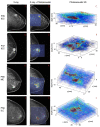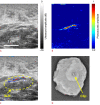Clinical photoacoustic imaging of cancer
- PMID: 27669961
- PMCID: PMC5040138
- DOI: 10.14366/usg.16035
Clinical photoacoustic imaging of cancer
Abstract
Photoacoustic imaging is a hybrid technique that shines laser light on tissue and measures optically induced ultrasound signal. There is growing interest in the clinical community over this new technique and its possible clinical applications. One of the most prominent features of photoacoustic imaging is its ability to characterize tissue, leveraging differences in the optical absorption of underlying tissue components such as hemoglobin, lipids, melanin, collagen and water among many others. In this review, the state-of-the-art photoacoustic imaging techniques and some of the key outcomes pertaining to different cancer applications in the clinic are presented.
Keywords: Neoplasms; Oncology; Photoacoustic techniques; Spectroscopy, near-infrared.
Conflict of interest statement
No potential conflict of interest relevant to this article was reported.
Figures






References
-
- Willmann JK, van Bruggen N, Dinkelborg LM, Gambhir SS. Molecular imaging in drug development. Nat Rev Drug Discov. 2008;7:591–607. - PubMed
Publication types
Grants and funding
LinkOut - more resources
Full Text Sources
Other Literature Sources
Molecular Biology Databases

